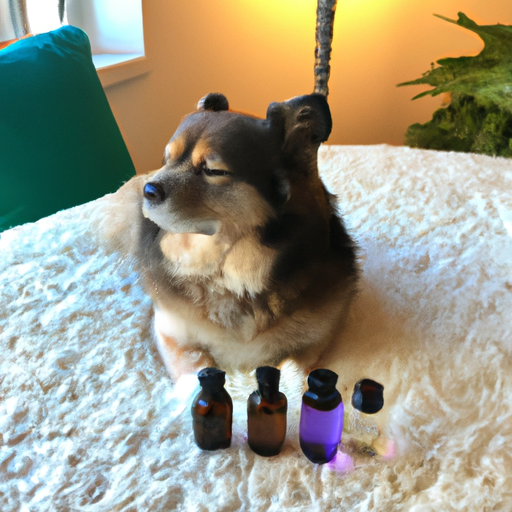We love our furry friends, but sometimes the scents they leave behind are less than desirable. Essential oils can be an excellent solution to this problem. But, many pet owners are unaware that some essential oils can be harmful to dogs. In this comprehensive guide, we’ll explore what oils are safe to diffuse around dogs and how to use them properly.
Table of Contents:
- Understanding Essential Oils
- Safe Essential Oils for Dogs
- How to Safely Use Essential Oils Around Dogs
- Dangerous Essential Oils for Dogs
- Frequently Asked Questions
Key Takeaways:
- Some essential oils are safe for dogs, while others can be harmful
- Proper dilution and diffusion techniques are crucial for safety
- Seek professional advice before using essential oils on or around dogs
Understanding Essential Oils
Essential oils are highly concentrated plant extracts with powerful scents. While they have many beneficial properties, they can also be harmful if misused. When it comes to our pets, the situation is no different.
Safe Essential Oils for Dogs
Some essential oils are safe to diffuse around dogs, and they can even have therapeutic effects. However, these oils should be used sparingly and in a well-ventilated area. Here are some oils that are generally safe for dogs:
-
Lavender: Known for its calming properties, lavender can help soothe an anxious dog. OneTopDog, a website dedicated to dog health and well-being, details the benefits of lavender for dogs.
-
Frankincense: This oil can be used to boost the immune system and reduce inflammation.
-
Cedarwood: Cedarwood can help repel pests and promote healthy skin and coat.
Remember, these oils should be used in moderation and always diffused, never applied directly to the dog’s skin. If you’re unsure about using these oils, consider consulting with a veterinary aromatherapist.
| Essential Oil | Use | Precautions |
|---|---|---|
| Lavender | Calming | Use in moderation, diffuse only |
| Frankincense | Immune boost | Use in moderation, diffuse only |
| Cedarwood | Skin and coat health | Use in moderation, diffuse only |
How to Safely Use Essential Oils Around Dogs
When it comes to using essential oils around dogs, there are a few safety guidelines to follow.
-
Diffuse in a well-ventilated area: This ensures that the scent is not too overpowering for your dog.
-
Start with a low concentration: Dogs have a much stronger sense of smell than humans, so what might seem like a pleasing aroma to us could be overwhelming for them.
-
Avoid direct contact with your dog’s skin or eyes: Essential oils are highly concentrated and could cause irritation.
-
Consult with a professional: Before starting any new treatment for your dog, it’s always a good idea to talk to a vet or a certified aromatherapist.
Dangerous Essential Oils for Dogs
While some essential oils can be beneficial for dogs, others can be harmful. Oils like tea tree, cinnamon, citrus, pennyroyal, pine, sweet birch, wintergreen, and ylang ylang should be avoided as they can cause irritation, discomfort, or even toxicity in dogs. OneTopDog has a comprehensive list of these dangerous oils.
Frequently Asked Questions
Q: Can I apply essential oils directly to my dog’s skin?
A: No, essential oils should never be applied directly to your dog’s skin. They should always be diffused or diluted.
Q: How long should I diffuse essential oils?
A: It’s best to diffuse essential oils for 15-20 minutes at a time. Remember, dogs have a stronger sense of smell than humans, so a little goes a long way.
Q: Can I use any essential oil diffuser?
A: Yes, but make sure the diffuser is in a well-ventilated area and not too close to your dog’s bed or crate.
In conclusion, while essential oils can be a great addition to your home, it’s crucial to use them responsibly around your pets. By choosing dog-safe oils and following proper diffusion methods, you can create a pleasant environment for both you and your furry friend. For more information on pet safety and health, check this out.



